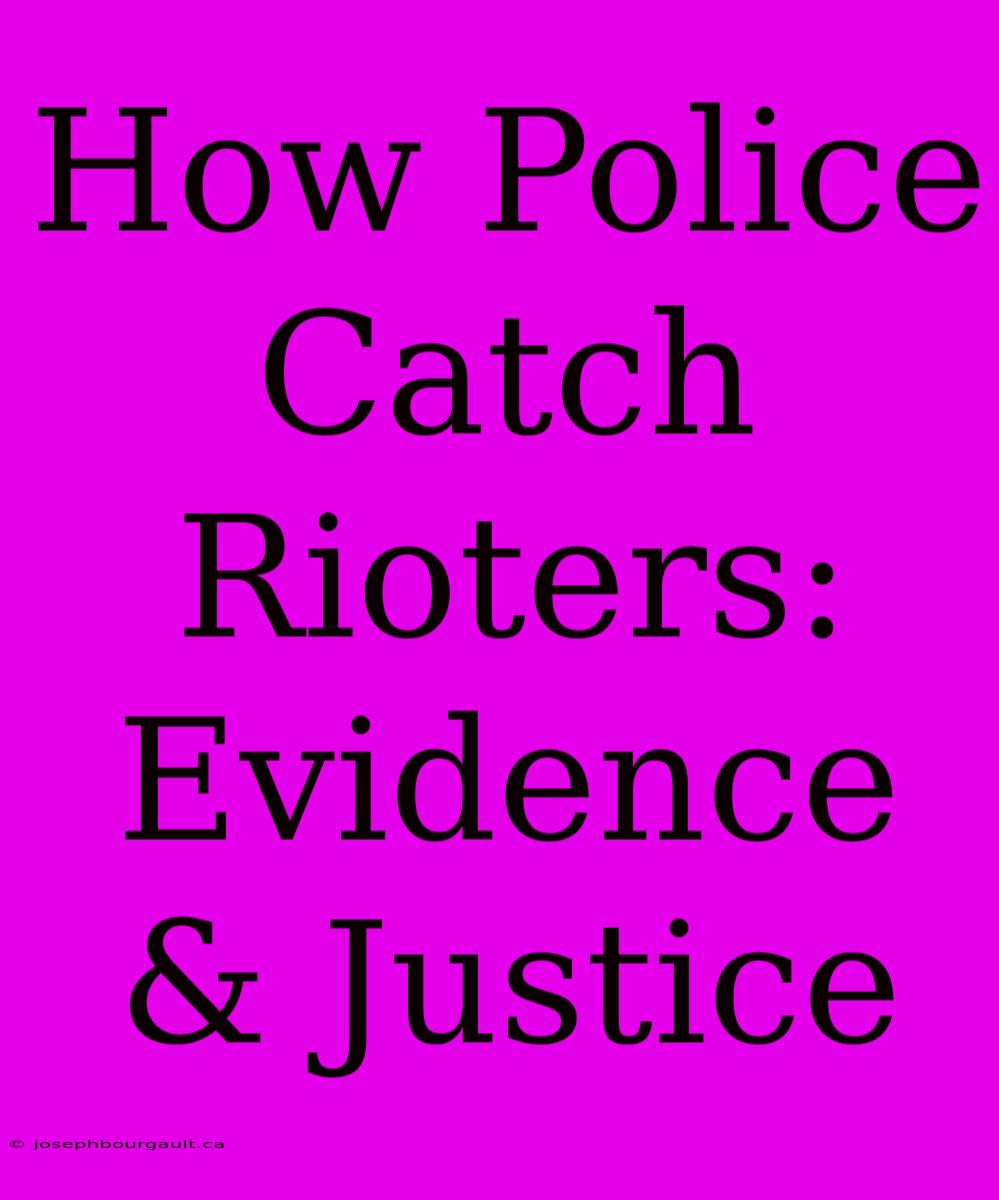How Police Catch Rioters: Evidence & Justice
Riots are a serious societal problem, often leading to damage, injuries, and even fatalities. While the majority of people participating in protests remain peaceful, a small minority engage in violent and destructive behavior. The task of identifying and bringing these rioters to justice falls to law enforcement agencies. But how do police catch rioters and ensure justice is served?
Gathering Evidence: The Crucial First Step
The foundation of any successful investigation, including riot investigations, lies in the collection of strong evidence. Here's how law enforcement agencies gather crucial information:
1. Surveillance:
- Video Footage: Modern technology plays a crucial role in identifying rioters. Police utilize CCTV footage from public and private cameras, along with videos captured by bystanders and even social media posts. Facial recognition software can help analyze footage to identify individuals.
- Drone Footage: Drones equipped with high-resolution cameras offer a unique aerial perspective, providing wide-angle views of riot scenes and capturing activities from above.
- Body Cameras: Body cameras worn by police officers provide an objective, first-person perspective of events, offering valuable evidence for investigations.
2. Witness Testimony:
- Police Officers: Police officers on the scene become witnesses themselves, documenting their observations, interactions, and any injuries sustained.
- Eyewitnesses: Individuals who witnessed the riot can provide valuable information, including descriptions of rioters, their actions, and potential identifying factors like clothing or tattoos.
- Anonymous Tips: Crimestoppers programs and other platforms allow individuals to provide anonymous tips, potentially leading to valuable leads.
3. Physical Evidence:
- Weapons: Any recovered weapons, such as firearms, knives, or makeshift weapons, provide crucial evidence linking individuals to the riot.
- Property Damage: Damaged property can be analyzed for fingerprints, DNA, or other trace evidence that can link individuals to the scene.
- Social Media Posts: Social media platforms are increasingly used as evidence. Posts containing photos, videos, or comments that identify individuals participating in riots can be valuable evidence.
The Legal Process: Ensuring Justice
Once evidence is gathered, the legal process begins, aiming to hold the perpetrators accountable. This process often involves:
1. Identification:
- Facial Recognition: As mentioned earlier, facial recognition software is used to analyze surveillance footage and social media posts to identify individuals.
- Physical Evidence: Physical evidence like fingerprints, DNA, and recovered weapons can be matched to known individuals.
- Social Media Activity: Social media posts, including hashtags, geolocation tags, and comments, can help identify individuals participating in the riot.
2. Arrests and Charges:
- Warrants: Based on gathered evidence, police obtain warrants to arrest suspects.
- Charges: Suspects are typically charged with offenses ranging from property damage and disorderly conduct to more serious charges like assault, battery, or arson, depending on their actions.
3. Trials and Sentencing:
- Evidence Presentation: At trial, prosecutors present the evidence gathered during the investigation, including video footage, witness testimony, and physical evidence.
- Defense Arguments: Defense attorneys argue on behalf of the accused, challenging the evidence and seeking to prove their innocence.
- Sentencing: If found guilty, rioters face various penalties, ranging from fines and community service to imprisonment, depending on the severity of their actions.
Challenges in Catching Rioters
While law enforcement agencies employ various techniques to catch rioters, the process faces several challenges:
- Large-scale Events: Riots are often large-scale events, making it difficult to identify individuals among a crowd.
- Disguises and Anonymous Actions: Rioters often wear masks, hoods, or other disguises to hide their identities, adding to the challenge of identification.
- Social Media Manipulation: Social media platforms can be used to spread misinformation and incite violence, making it challenging to distinguish genuine evidence from fabricated content.
- Limited Resources: Law enforcement agencies may have limited resources to investigate complex riots involving numerous individuals.
The Importance of Evidence-Based Justice
Ensuring justice for victims of riot violence is crucial. This requires thorough investigations, diligent evidence gathering, and fair legal proceedings. The use of modern technology and the careful application of legal principles are essential to identify rioters and hold them accountable for their actions.
Remember, while protests are a fundamental right, violence and destruction have no place in a civilized society. By gathering robust evidence and pursuing justice through a fair legal process, law enforcement can protect individuals, communities, and property from the destructive consequences of riots.

